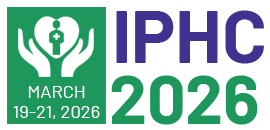Title : Transition and factors associated with the level of physical activity combined with sedentary behavior of the elderly
Abstract:
During the presentation, health aspects related to the level of physical activity combined with the behavior of the elderly will be discussed. Physical activity and sedentary behavior are emerging issues in public health, especially in developing countries. A research was conducted in order to verify transition and factors related to physical activity combined with sedentary behavior among the elderly followed for 24 months. It was a longitudinal observational study with people aged 60 years or over living in the urban area of Uberaba, Brazil. The data from sociodemographic, health, and physical tests in 2014 and 2016 using the Mini-Mental State Examination (MMSE), the Katz Index, the Lawton and Brody Scale, the Short Physical Performance Battery (SPPB), and the International Physical Activity Questionnaire (IPAQ) were collected. For the combined evaluation it was considered a cutoff point of 150 minutes of physical activity per week and the percentile 75 (420 minutes/day) for sedentary behavior constituting the groups: Unsatisfactory (insufficient sum of physical activity and sedentary behavior), intermediate (loss of only one of the two components) and satisfactory (sufficient sum of physical activity and sedentary behavior). The statistical descriptive and inferential analysis was performed using the Statistical Package for Social Sciences™, version 21.0, considering p<0.05. The results showed that of the 374 elderly, 61 (16.3%) improved their physical activity and sedentary behavior condition, 226 (60.4%) remained in the same category and 87 (23.3%) got worse. Unsatisfactory levels of physical activity and sedentary behavior were related to the eldest group (p=0.031), the absence of professional activity (p<0.001), the dependence for instrumental activities of daily living (p=0.013), and a worse physical performance (p<0.001). In this way, it was possible to identify a relationship between sociodemographic and health factors with physical activity and sedentary behavior, reiterating the need for further research on the subject.



